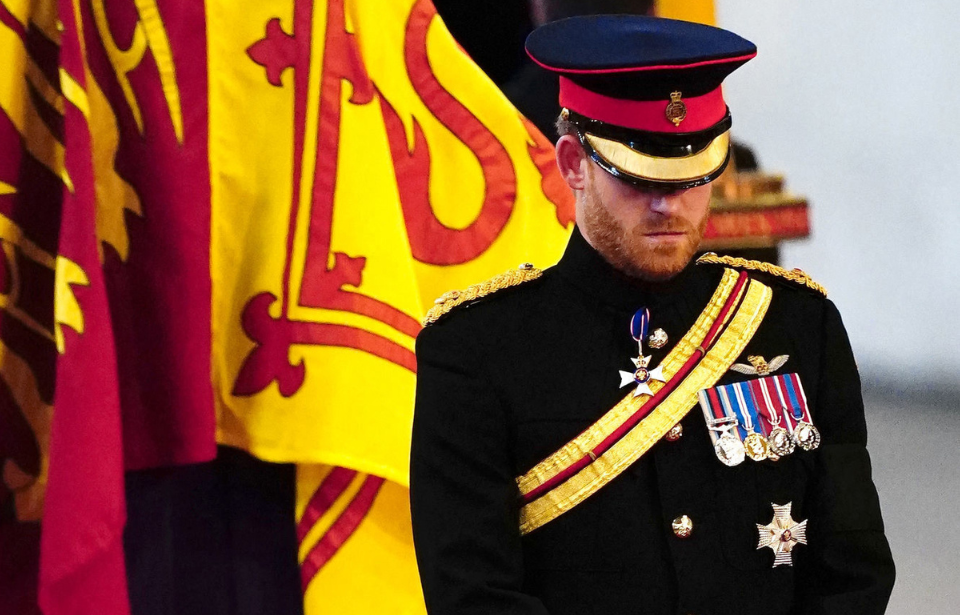The passing of Queen Elizabeth II on September 8, 2022, had a huge impact globally. In the United Kingdom, a solemn phase of mourning started, marked by throngs gathering at the Palace of Westminster to pay their final respects. Prince Harry, an Afghanistan War veteran, stood alongside his family in dignified vigil, honoring the memory of the departed monarch. The significance of this responsibility was heightened by the symbolic act of removing the “ER” cypher from his military attire, adding to the emotional gravity of the moment.
What is the ‘ER’ cypher?
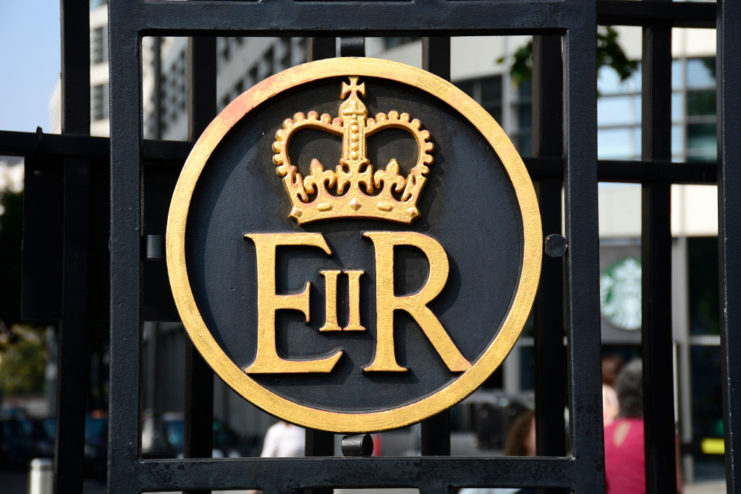
To comprehend why the removal of the “ER” cypher was distressing for Prince Harry, it’s essential to delve into its significance. “ER” – or “EIIR” – served as the Royal Cypher for Queen Elizabeth II, symbolizing Elizabeth Regina, where “Regina” signifies “Queen” in Latin.
Each British monarch possesses a unique Royal Cypher, which is prominently displayed on government buildings, Royal Family-related items, state documents and mailboxes throughout their reign. For seven decades, the presence of “ER” became ingrained in the British public consciousness. With the ascent of Elizabeth II’s son, Charles III, to the throne, the Royal Cypher transformed into “CR” and “CIIIR,” representing Charles Rex, where the latter translates to “King” in Latin.
The transition from “ER” to “CR” is anticipated to unfold gradually.
King Charles III gave Prince Harry permission to wear his uniform
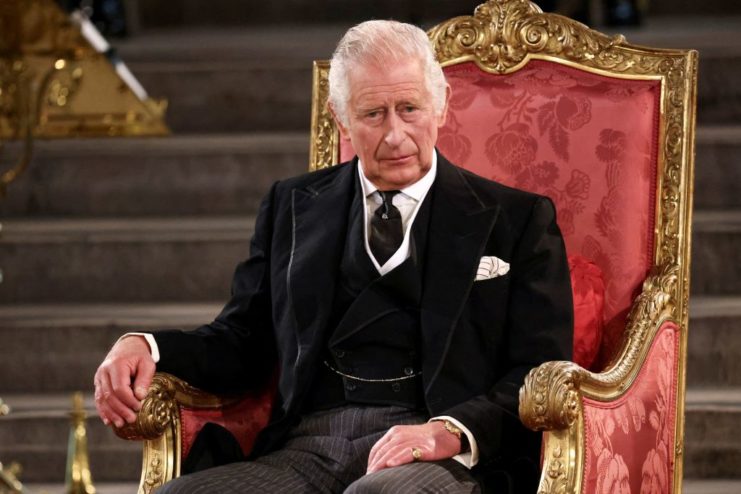
Following his decision to step down from his royal obligations in 2020 and settle in California alongside his wife, Meghan Markle, Prince Harry lost numerous honorary military positions, including Commodore-in-Chief, Small Ships and Diving, Royal Naval Command; Captain General Royal Marines; and Honorary Air Commandant, RAF Honington. Additionally, he had previously served as Queen Elizabeth II’s personal aide-de-camp.
When Prince Harry withdrew from his role in the British Royal Family, it was anticipated that he would attend the vigil in Westminster Hall clad in a morning suit alongside Prince William and their cousins in Westminster Hall. However, King Charles III subsequently granted his son permission to wear his military attire, partially in response to public outcry regarding Prince Andrew’s wearing of his vice-admiral uniform during the vigil led by Elizabeth II’s children.
The ‘ER’ cypher was removed from Prince Harry’s uniform
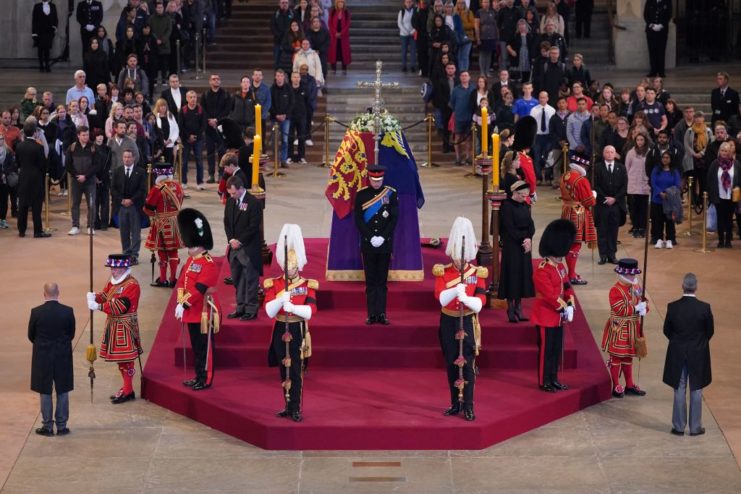
As Princes Harry and William and their cousins – Zara Tindall and Peter Phillips; Lady Louise Windsor and James, Viscount Severn; and Princesses Beatrice and Eugenie – made their way to Queen Elizabeth II’s coffin for their 15-minute vigil on September 17, 2022, the “ER” cypher was noticeably absent from Harry’s military uniform. He was, however, wearing his Afghanistan service medal and those dedicated to the Golden, Diamond and Platinum Jubilees.
According to an insider who spoke to The Sunday Times, Harry was humiliated over the removal of his grandmother’s cypher, as it was kept on his brother’s uniform. In fact, he felt so poorly about it that he even considered attending the vigil in his morning suit. It was the first time he’d worn his military clothes since 2020 and, according to the insider, the removal of the “ER” from his shoulder left Harry “devastated.”
“He is heartbroken,” they said. “To remove his grandmother’s initials feels very intentional.”
Was the snub actually intentional?
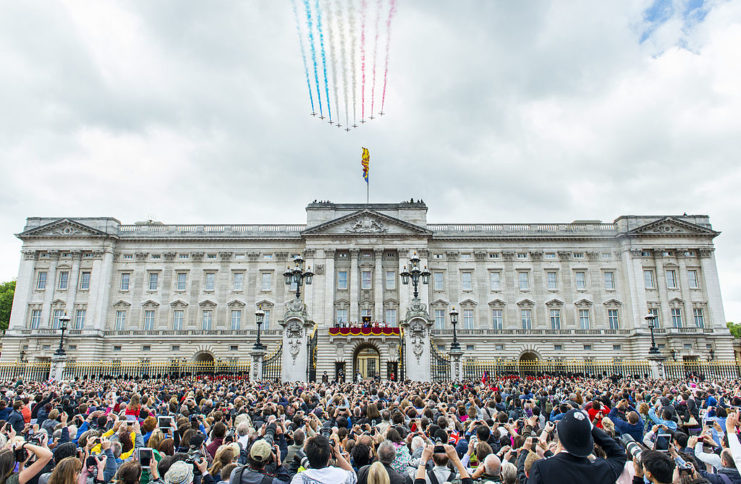
While many have taken the removal of the “ER” cypher from Prince Harry’s uniform as an intentional snub, that doesn’t actually appear to be the case, as Queen Elizabeth II’s initials were traditionally only worn by those in active service to her and the British Monarchy.
Under the Royal Family’s dress code, working members who have served in the British Armed Forces must wear their uniform for military affairs. This includes state funerals, Remembrance ceremonies and during the Trooping the Colour.
Prince Harry’s service in Afghanistan
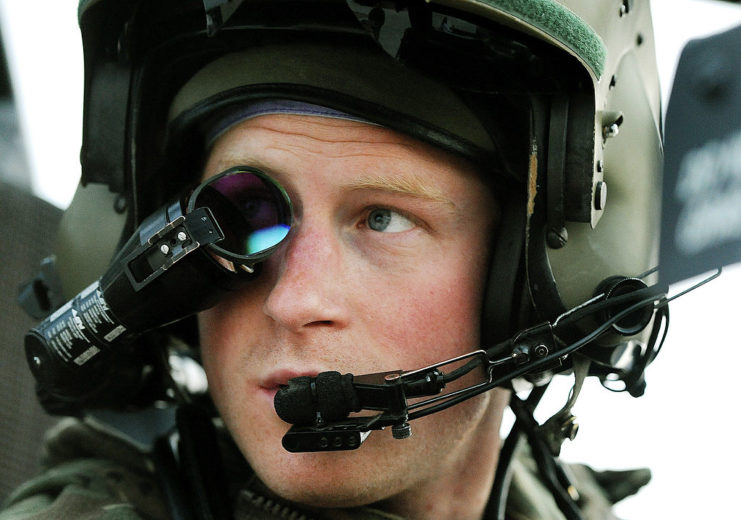
Prince Harry served in the British Army for 10 years, enrolling in the Royal Military Academy Sandhurst in May 2005 with Alamein Company. He completed his officer training a year later and was commissioned as a Cornet in the Blue and Royals, a regiment of the Household Cavalry. He was promoted to the rank of lieutenant two years later.
Following pressure from international media, the British Ministry of Defence revealed in February 2008 that Harry had been deployed to Helmand province, Afghanistan as a Forward Air Controller, with later reports stating he’d assisted Gurkhas in repelling an attack by insurgents. He also performed patrols in hostile areas. Almost immediately after the announcement was made, Harry was pulled out of the area over fears for his safety and that of his comrades.
A year after graduating from the Defence Helicopter Flying School at Royal Air Force (RAF) Shawbury in May 2010, Harry was promoted to captain. A few months later, in October 2011, he was transferred to a US military base in California to participate in helicopter gunship training. He subsequently returned to the UK, where he became a certified Apache pilot.
In September 2012, Harry return to Afghanistan, this time assigned to Camp Bastion as a co-pilot and gunner with 662 Squadron, 3 Regiment, Army Air Corps. Within days of his arrival, reports surfaced that threats had been made against his life. Following an attack on Camp Bastion that left two US Marines dead, he was moved to a safe location.
More from us: Queen Elizabeth II Snuck Out In Disguise to Join V-E Day Celebrations
Want War History Online‘s content sent directly to your inbox? Sign up for our newsletter here!
Harry completed his 20-week deployment and, two years later, retired from the British Army. He has since called his service with the Armed Forces “the happiest times of my life,” and his experience in Afghanistan led him to establish the Invictus Games, an international sporting event for injured active-duty and veteran service members.
